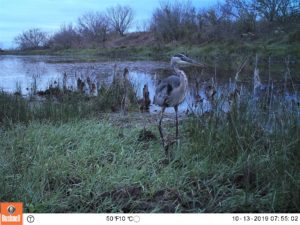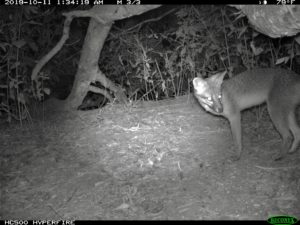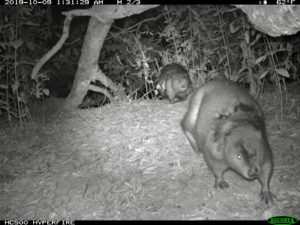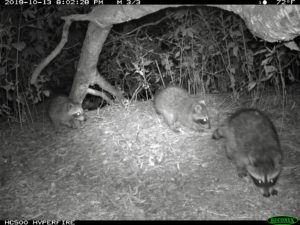Weeks 19 & 20:
Last week, I posted a few more trail cameras in addition to the operations already established at the recurring survey points. I stationed the new cameras as practice for myself in locating game trails, setting the cameras and avoiding/removing triggering vegetation, and experimenting a little with camera placement and programming. Three of the cameras were also set to collect time lapse or “field scan” photos at ponds, to see if waterfowl can be identified at distance with that technique.
After collecting and reviewing the first set of photos from the additional cameras, I have determined that field scanning ponds is not likely to be effective as a secondary method of monitoring waterfowl, due in large part to low long-distance image quality. On both Reconyx and Bushnell cameras, egrets and herons are identifiable, but anything smaller is a vague silhouette that precludes species identification unless the light is absolutely perfect and the animal is actually near the camera. I did have better success experimenting with trigger camera heights and angles, with one camera set at around 8 feet high and angled down to cover a clearing. It regularly captured the entire animal in frame as the individual moved through the view field, and I will be trying that at other sites in future. I’ve included a few new images that showcase some of the better results of my efforts so far, including one of the first grey fox (Urocyon cinereoargenteus) on this survey, as well as a trio of raccoon kits (Procyon lotor) adding to our already robust population, confirmation of two beavers (Castor canadensis) at one site, and a great blue heron (Ardea herodias).
In other news, the monarch butterflies (Danaus plexippus) arrived en masse over the weekend, and I have been enjoying their presence around the farm these past few days. This past Tuesday, I spotted a common yellowthroat (Geothlypis trichas), a species of warbler previously unseen on the farm. I also finally achieved my first decent, identifiable photo of a great horned owl (Bubo virginianus), collected last Thursday. We have numerous great-horned owls on the property, but they usually spot me and fly off before I notice their perch or don’t let me get close enough for a photo if I do. This in
dividual was a confident fellow and just kept an eye on me as I circled closer, until finally deciding my presence was too off-putting to further endure, and silently glided off.
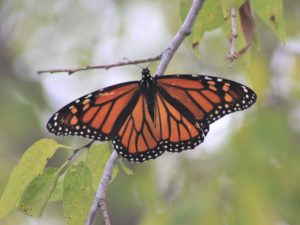
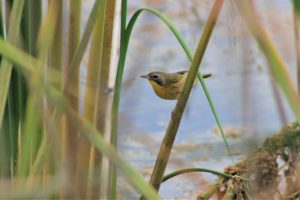
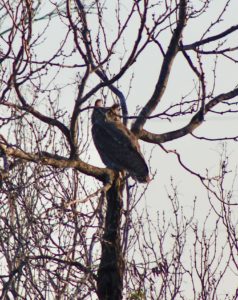
Until next time,
Dani Miller
Wildlife Biologist
Stiles Farm Foundation


